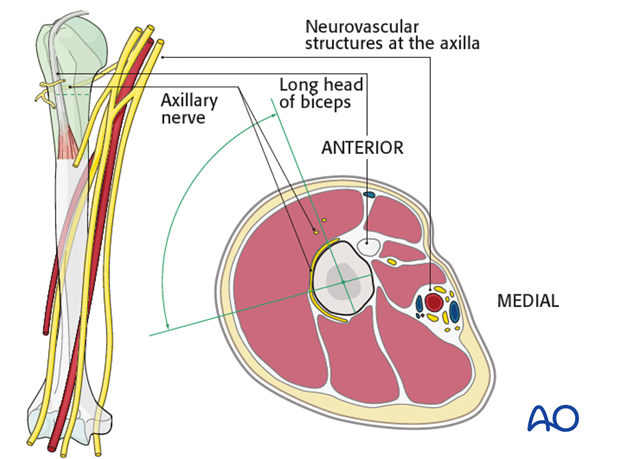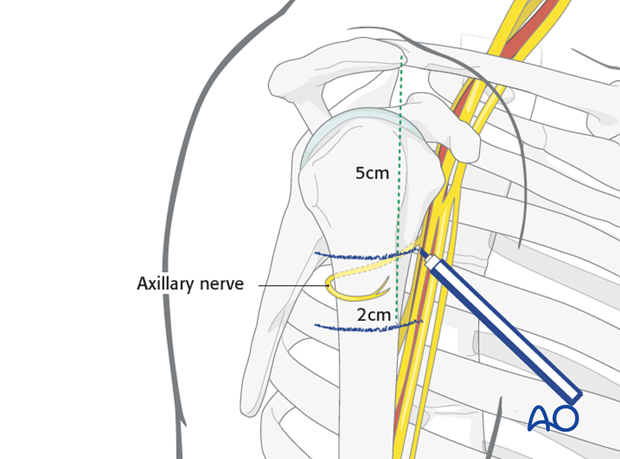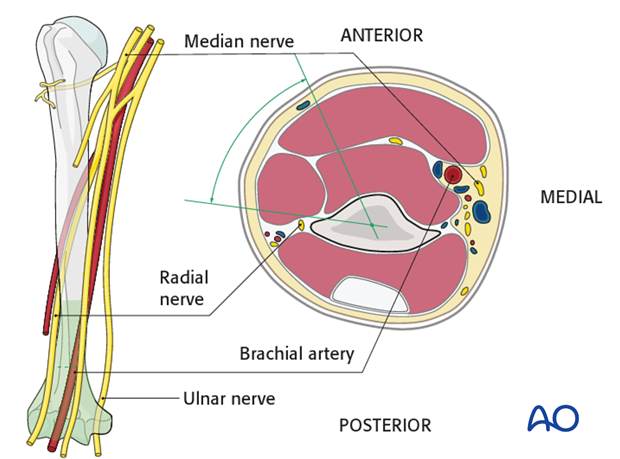Safe zones in the humerus for percutaneous pins or screws
1. Introduction
Inserting percutaneous instrumentation through safe zones reduces the risk of damage to neurovascular structures.
2. Safe zone in the proximal third
Pins or screws are inserted from a (antero-) lateral direction through the deltoid muscle.
Avoid damage to the axillary nerve (as shown in the next illustration) and the long biceps tendon.
The tips of the pins should just perforate the far cortex. If too deep, the tips can injure the medial neurovascular bundle.

The axillary nerve runs dorsolaterally around the humeral metaphysis, about 5-7 cm below the acromion.

3. No safe zone in the middle third
Avoid pin placement in the middle third as the radial nerve, which is in close relationship with the dorsal diaphyseal cortex, can be damaged.

4. Safe zone in the distal third
Classically, pins are inserted from a posterior (alternatively from a posterolateral or posteromedial) direction through the triceps muscle, to stay within the safe zone and to avoid damage to the radial nerve.
Avoid penetration of the olecranon fossa.
The tips of the pins or screws should just perforate the far cortex. Placement too deep can damage the median nerve and/or brachial artery.

The safe zone in the distal third is usually not accessible in polytraumatized patients, who are supine. In addition, a posteriorly inserted pin may irritate the triceps tendon and may be uncomfortable to position the arm in bed.
Therefore, consider placing the pin laterally within the dangerous zone of the radial nerve. To reduce radial nerve injuries, use incisions which are large enough to ensure palpation and/or direct visualization of the radial nerve (no stab incisions).














